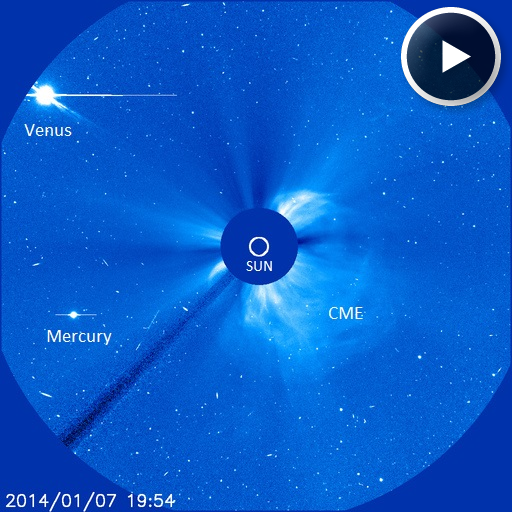Proton levels are rising again due to the latest eruption and are expected to hit (S2) threshold associated with this event was a 10cm radio burst lasting 50 minutes and reaching 8300 solar flux units. SolarWatcher

The "snow" in this movie is caused by solar protons striking the spacecraft's CCD camera. A veritable blizzard of speckles develops as the CME emerges into full view. Indeed, many of the protons are accelerated by shock waves at the forefront of the expanding cloud.
This ongoing radiation storm ranks S2 on NOAA storm scales. It is rich in "hard" protons with more than 100 MeV of energy, which accounts for the snowiness of the SOHO coronagraph images. According to NOAA, "passengers and crew in high-flying aircraft at high latitudes may be exposed to elevated radiation risk" during such a storm.
The source of all this activity is AR1944, one of the biggest sunspots of the past decade. The sprawling active region is more than 200,000 km wide and contains dozens of dark cores. Its primary core, all by itself, is large enough to swallow Earth three times over.
ROCKET LAUNCH FOILED BY SOLAR ACTIVITY: Orbital Sciences Corp. scrubbed today's launch of their Antares supply rocket to the International Space Station in response to an ongoing solar radiation storm, described above. SpaceWeather
